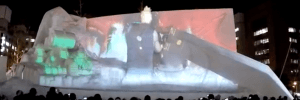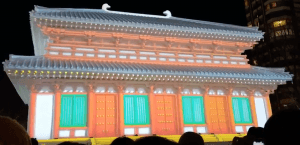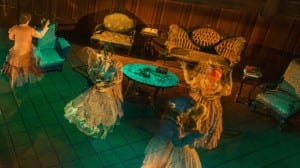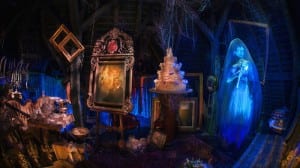The 2017 Sapporo Snow Festival features different samples of projection mapping onto different snow sculptors.
The first one shown is a Final Fantasy VII snow sculptor, and scenes from the game are projected on to it. The characters of Cloud and Sephiroth are brought to life by displaying their likeness onto the white, snow models of themselves. Scenes are then projected around the character models, showing footage from the original product, and its updated re-release of which this sculptor is a promotion of, the focus of the projection being on Cloud’s iconic Buster Sword. By displaying the characters on the snow, it shows more of them than the snow or a video alone could, really bringing the characters to the fore. This, and the combination of the surrounding video, advertises the product in a clear and original way, by using footage of the game on the characters themselves. It brings more depth to the advertisement, as it is showing the game in the context of t’s own world and characters.
The second video shows Kohfukuji Temple in Nara being projected onto. The projections used here turn the plain white temple into a colourful rendition of a real temple. It shows lights and colours moving through and around the temple, making it appear as more than just snow. By mapping onto the shape of the snow, the temple looks more real. The dimensions of the snow have to be considered in order to create this effect, as a video played onto the snow would look flat, and not show the same depth. This shows the key difference in projection mapping, instead of merely projecting a video.
The ideas behind these projections can help inform my own piece. They focus on depth, and using the environment to enhance the experience of the light show. By focusing on the environment that I have to work with, I can enhance my videos, by having them interact more with there surroundings. Projections can be used to turn a blank space into a number of different places, and create a new setting, as well as enhance the appearance of plain characters. It can also be used to make things that cannot move or change appear to do so, allowing me to show poltergeist activity on inanimate objects.



